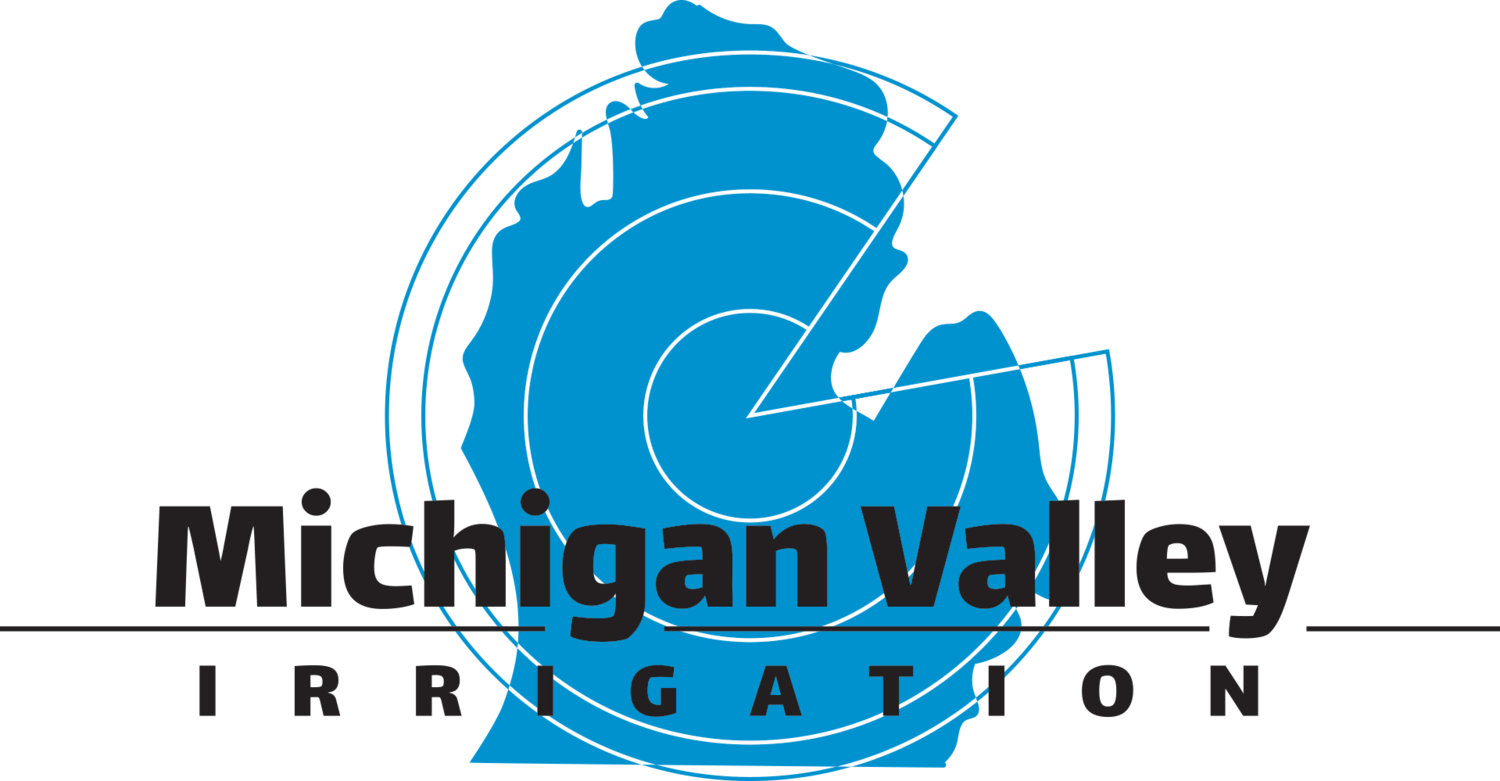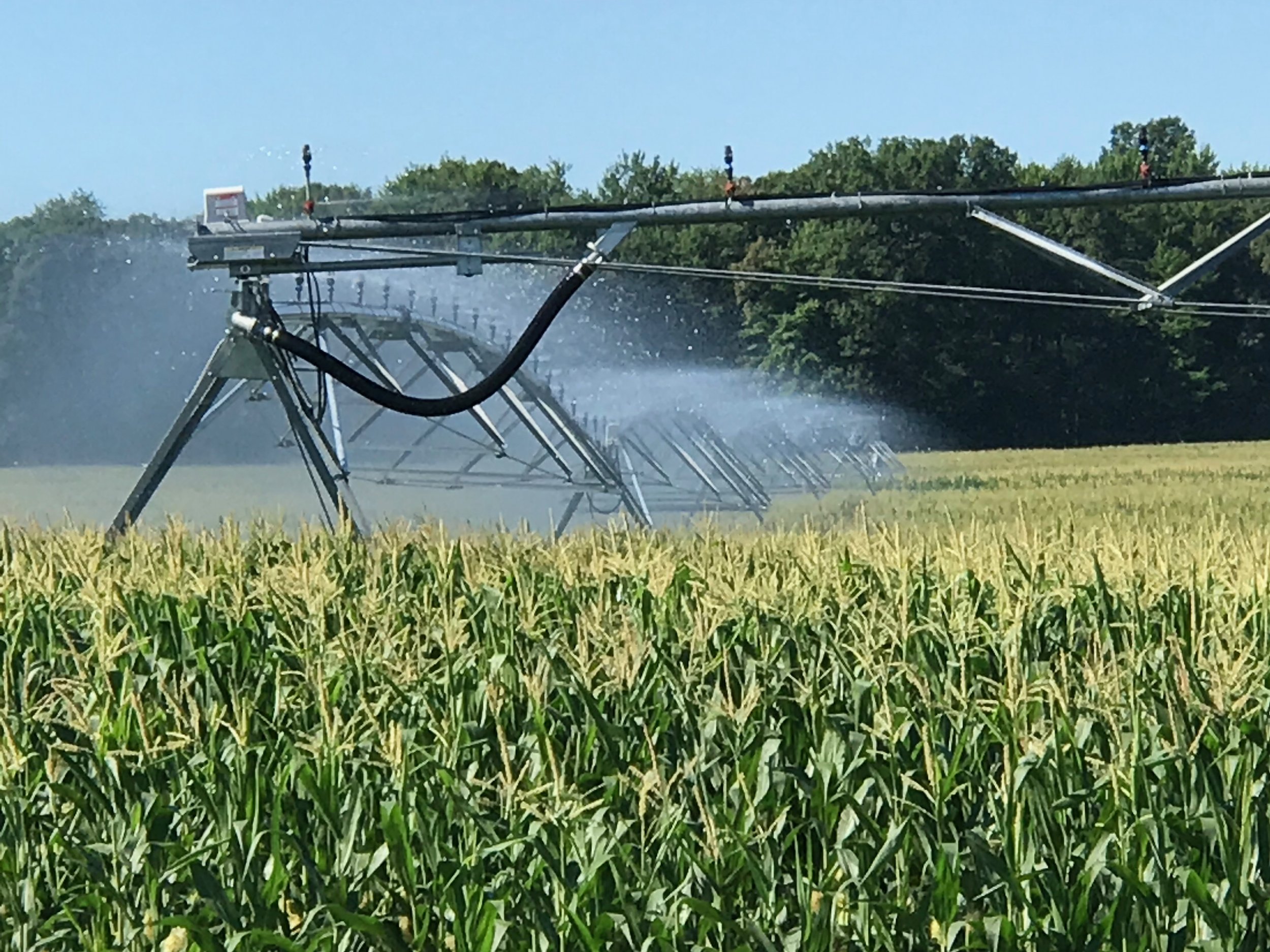Irrigation Scheduling
Irrigation scheduling is the decision of when and how much water to apply to the field. Its purpose is to maximize irrigation efficiencies by applying the amount of water needed to replenish the soil moisture to the desired level.
If you have been using the guess method or waiting until your crop shows some signs of stress, you can do better.
There are several methods to gain accuracy and efficiency. It is probably best to jot down the goals of the process on your farm and then select the best tools to be successful. Often in Michigan, we are not significantly limited by available water, so I would suggest that you look to optimize yield. The handwritten checkbook system is a basic method. (See link at the bottom of this page.)
Here is what you will need to get started:
What level of water exists in the root zone? (See chart for the hand feel method)
What is the water use of the crop being grown at the selected growth stage - Kc Value?
What is the Potential Evapotranspiration Rate? (How much water will be removed over the next 7 days?)
What is the coefficient to convert the grass based factor to your crop. See link to chart. https://mawn.geo.msu.edu/irrigation/crop.txt
How much precipitation was received during the last week?
What level of irrigation water reached the root zone? Not just what was pumped but received in the root zone. (bucket capture method – 10' spacing length of pivot path)
I suggest you follow this link, print it off and follow along using the form.
https://www.canr.msu.edu/uploads/235/67987/resources/SoilWaterBalanceSheet.03.05.15.pdf
There are 58 strategically located weather stations throughout Michigan where weather data is collected an available to you at Enviroweather (https://enviroweather.msu.edu/) This site can provide good information on Evapotranspiration Rates for recent and projected windows of time if you do not have an on-farm weather station. Some well-placed rain gauges can provide good precipitation measurements. You can check your irrigation system’s efficiency by placing buckets underneath your irrigation system and measuring the water reaching the soil surface. Crop needs vary dramatically during the growth and development stages. This information is readily available from research and included on the soil water balance sheet attached at the bottom of this article.
Let’s breakdown an example using corn (If you are not growing corn make sure to use the multiplier to adjust the basic grass Kc to your crop):
Determine the starting soil water deficit. (Below full capacity) From the University of MN Chart on Sandy loam soil, fairly dark color, makes a good ball - .6” deficit.
Follow the link below for the full chart:
https://extension.umn.edu/irrigation/estimating-soil-moisture-feel-and-appearance-method
It is mid-June and the corn is ~ 4 - 5 weeks post emergence and at V8 growth stage. The Kc value is the amount of water used by the plant. Chart in the MSU soil water balance sheet.
Our Kc = .56 (Based on V8)
The potential evapotranspiration rate (PET) from the weather station is .18” / day.
.56 x .18 = .147 x 7 days = .71” / week.
A simpler method is to use the water use by stage and temperature estimates in the chart included with the paper checkbook balance sheet form. ( V8 – 5 weeks post emergence 70-79 degrees = .10)
This gives you the daily use, so multiply by seven to get a weekly use and then adjust with rain and irrigation quantities.
We apply .75” / week through irrigation, but our system is 85% efficient resulting in .64” per week.
The formula calculation is as follows:
Starting Soil Water Deficit - ((Kc x PET) x 7 days) + Rainfall + Net Irrigation +New Soil Water Deficit.
SSWD – Crop Water Use + Rain+ Irrigation = New SWD
-.6 – .71 + .3 + .64 = -.37 for a net gain of .23”
The simpler method using the water used chart provided would be:
-.6 - (.1 (water use) x 7 Days) +.3 + .64 = - .36 for a net gain of .24”
When crop demands and temperatures are high, make sure your irrigation system has the capacity to “keep up”. It may be necessary to fill up the soil profile in the weeks leading up to peak use which are typically 8 to 13 weeks after emergence for corn. The goal is to balance having too much water in the root zone with maximizing the soil moisture holding capacity, so your crop is never stressed, but nutrients do not leach away. Peak crop demands are often difficult to keep pace with by irrigating without summer rains.
Another thing we commonly see is “turning off the water too soon”. It can be especially trying if you have lots of fields you are irrigating through a long dry summer. It may look like you have a nice crop, but yield may still be building. Depending on temperatures, corn may still need more than .6” per week through and after the dent stage.
The handwritten checkbook balance sheet for corn and soybeans can be found with the following link:
https://www.canr.msu.edu/uploads/235/67987/resources/SoilWaterBalanceSheet.03.05.15.pdf
If you prefer an excel spreadsheet version, that can be found at:
https://mawn.geo.msu.edu/irrigation/
If you would like a computerized version, The Irris Scheduler, use the link below:
https://www.purdue.edu/agsoftware/irrigation/
While this example was based on corn it is simple to get data for other crops you may be growing. See the following link for a chart to convert PET for other crops.
https://mawn.geo.msu.edu/irrigation/crop.txt
While this article contains formulas, links and examples that may seem a bit overwhelming, try this:
Take the average daily water use for corn at the relative stage, multiply by 7 days to get a negative number.
Add the rainfall for the week and the net irrigation you applied. If you are negative, increase your irrigated amount for the next week.
Look at the weather forecast and don’t overwater creating puddles.
Ask for help and strive to get better.
Maximizing returns from your crop and your irrigation system will benefit your bottom line.
Thanks to Lyndon Kelly and the MSU staff for helping with this article. There is lots of good irrigation information on the MSU website: https://www.canr.msu.edu/irrigation/
ABOUT THE AUTHOR
Pete is the marketing manager for Michigan Valley Irrigation, having joined the company in 2016. He was raised on a dairy farm in western New York and graduated from Cornell University with a B.S. in agricultural economics. His entire working career of over 37 years has been involved in agriculture. A farmer helping farmers. When away from Michigan Valley he operates, Joyful Noise Farm, a small livestock and produce farm and spends time with his family.







